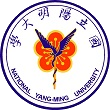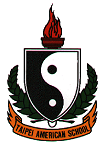Team:NYMU-Taipei/project/4c
From 2014.igem.org
| (24 intermediate revisions not shown) | |||
| Line 3: | Line 3: | ||
<div id="main-content"> | <div id="main-content"> | ||
<h>Completion-Killing</h> | <h>Completion-Killing</h> | ||
| + | <div class='abstract'> | ||
| + | <ul> | ||
| + | <li>Activated by SOS signal from phage</li> | ||
| + | <li>Signal sequence bringing downstream protein extracellular</li> | ||
| + | <li>Endolysin breaking Streptococcus Mutans cell wall</li> | ||
| + | </ul> | ||
| + | </div> | ||
| + | <div class='cont-panel'> | ||
| + | <div href='#4c-1'><p>purpose</p></div> | ||
| + | <div href='#4c-2'><p>background</p></div> | ||
| + | <div href='#4c-3'><p>design</p></div> | ||
| + | <div href='#4c-4'><p style="line-height: 25px;">Functional Measurement</p></div> | ||
| + | <div href='#4c-5'><p>result</p></div> | ||
| + | <div style="display:inline-block; width: 640px; height: 0.1px; border: none; margin: 0px"></div> | ||
| + | </div> | ||
| + | <div id='4c-1' style='height:50px;'></div> | ||
<h1>Purpose</h1> | <h1>Purpose</h1> | ||
<p>The killing part in completion is to eliminate the Streptococcus Mutans that phages are unable to infect. When the amount of the S.mutans is so large that the phages couldn't afford the loading, the signal detecting competence simulating peptide(CSP) would pass the threshold value and turn on the communication signal, thereby simulate the promoter of this killing part. The signal sequence and endolysin downstream would be secreted and eliminate the excess S.mutans.</p> | <p>The killing part in completion is to eliminate the Streptococcus Mutans that phages are unable to infect. When the amount of the S.mutans is so large that the phages couldn't afford the loading, the signal detecting competence simulating peptide(CSP) would pass the threshold value and turn on the communication signal, thereby simulate the promoter of this killing part. The signal sequence and endolysin downstream would be secreted and eliminate the excess S.mutans.</p> | ||
| + | <div id='4c-2' style='height:50px;'></div> | ||
<h1>Background</h1> | <h1>Background</h1> | ||
| - | <p>To start with, N-acyl homoserine(AHL) is a generally quorum sensing material in gram negetive bacteria. The AHL we found is particularly existed in V. fischeri, and had been successfully complete utilized in many gram negative bacteria including E.coli in many papers and previous iGem team. It can pass E.coli membrane without extra help. Being a gram negative bacteria, E.coli doesn't naturally secrete substance into extracellular environment, except for some toxins. Therefore, secreting proteins out of membrane in nontoxin experimental strain would be much harder. There are few types of secretion pathway in bacteria, the most common ones would be typeI and typeII. However, common experimental strain doesn't apply the typeI pathway. Furthermore, single signal sequence in type II secretion only leads the recombinant protein to the periplasm region. Therefore, choosing a short sequence efficiently bring our product out of the E.coli membrane is a hard process. | + | <p>To start with, N-acyl homoserine(AHL) is a generally quorum sensing material in gram negetive bacteria. The AHL we found is particularly existed in V. fischeri, and had been successfully complete utilized in many gram negative bacteria including E.coli in many papers and previous iGem team. It can pass E.coli membrane without extra help. Being a gram negative bacteria, E.coli doesn't naturally secrete substance into extracellular environment, except for some toxins. Therefore, secreting proteins out of membrane in nontoxin experimental strain would be much harder. There are few types of secretion pathway in bacteria, the most common ones would be typeI and typeII. However, common experimental strain doesn't apply the typeI pathway. Furthermore, single signal sequence in type II secretion only leads the recombinant protein to the periplasm region. Therefore, choosing a short sequence efficiently bring our product out of the E.coli membrane is a hard process.<br> |
Endolysin is an enzyme expressed by phage-infected bacteria. The C-terminus bind to the host cell wall, while the N-terminus is enzymatic domain. Working with holin, which lyses cell membrane, endolysin could break the cell wall of | Endolysin is an enzyme expressed by phage-infected bacteria. The C-terminus bind to the host cell wall, while the N-terminus is enzymatic domain. Working with holin, which lyses cell membrane, endolysin could break the cell wall of | ||
| - | bacteria. Usually serve as peptidase, endolysin tend to work on gram negative species, who have layers of peptidoglycan cell wall. Though originally intended to be utilized inside the cell wall, endolysin can also be applied outside cell according to previous research. Furthermore, it is even less harmful to gram negative bacteria this way because of the lipid layer of those bacteria composes cell wall. </p> | + | bacteria. Usually serve as peptidase, endolysin tend to work on gram negative species, who have layers of peptidoglycan cell wall. Though originally intended to be utilized inside the cell wall, endolysin can also be applied outside cell according to previous research. Furthermore, it is even less harmful to gram negative bacteria this way because of the lipid layer of those bacteria composes cell wall.</p> |
| + | <div id='4c-3' style='height:50px;'></div> | ||
<h1>Design</h1> | <h1>Design</h1> | ||
<p>!figure not yet!</p> | <p>!figure not yet!</p> | ||
<p><b>LuxpR promoter</b><br>The promoter of the circuit is in charge of the communication between phage and E. coli communication. Induced by AHL-luxR complex, the promoter could turn on the expression of downstream coding sequence once the SOS signal(AHL) is spread by phage.</p><br> | <p><b>LuxpR promoter</b><br>The promoter of the circuit is in charge of the communication between phage and E. coli communication. Induced by AHL-luxR complex, the promoter could turn on the expression of downstream coding sequence once the SOS signal(AHL) is spread by phage.</p><br> | ||
| - | <p><b>(RBS)yebF</b><br>yebF is a protein that is naturally secreted by E.coli. Research | + | <p><b>(RBS)yebF</b><br>yebF is a protein that is naturally secreted by E.coli. Research has found that recombinant protein linked to the C-terminus of this signal sequence can be effectively secreted to extra-cellular region, with various size and hydrophobicity, though not cleaved. Though the mechanism is not well understood, we assume that it would lead to periplasm with the signal domain in the front region of the protein, and later secreted through porin on the cell wall. The advantage of the signal sequence is that it can be secreted in experimental strains which usually do not secrete proteins, along with other diverse passenger characters.</p><br> |
| - | <p><b>M102-ORF19</b><br>There | + | <p><b>M102-ORF19</b><br>There is a set of open reading frames in S. mutans phage M102 that is responsible for endolysin production and activation, which is the region containing opening reading frame 18-20. With the eighteenth open reading frame producing holin that destroys the cell membrane, the endolysins expressed by the 19th and 20th opening reading frame are able to contact and lyse cell wall. While the phage usually encodes one endolysin and comprises all ability to lyse cell wall, M102 has two open reading frames, the 19th and 20th, allowing it to encode two different endolysin to break the cell wall of S. mutans. The endolysin translated by the 19th opening reading frame is glucosidase, which can break the polysaccharide capsule of Strepptoccocus cell wall. The N-terminus, in charge of cell wall binding, has different amino acid coding with other endolysins, indicating its specificity. The 20th opening reading frame encodes pepdoglycandase and has CHAP domain, which is usually involved with endolysin. In our experiment, we would first test if the 19th open reading frame is enough to do harm to the Strepptoccocus Mutans. If it is not fatal, we would consider the 20th open reading frame for further experimentation.</p><br> |
<p><b>B0015</b><br>A double terminator composed of B0010 and B0012. It has used by many iGEM teams, and have strong terminating force. | <p><b>B0015</b><br>A double terminator composed of B0010 and B0012. It has used by many iGEM teams, and have strong terminating force. | ||
</p><br> | </p><br> | ||
| - | <h1>Functional Measurement </h1> | + | <div id='4c-4' style='height:50px;'></div> |
| - | <p> | + | <h1>Functional Measurement</h1> |
| - | + | <p>To test if the parts above work, we design following steps:</p><br> | |
| - | + | <p><b>Step one : </b>Construct the testing circuit by using 3A assembly, we tried to build circuits to prove our parts, including those described below:</p> | |
| - | + | <ol> | |
| - | + | <li>To test if the signal sequence,yebF works, two circuits needed to be constructed | |
| - | + | <ul> | |
| - | + | <li>J23100-(RBS)yebF-RFP-terminator</li> | |
| - | + | <li>J23100_RFP-terminator</li> | |
| - | the second circuit having normal culture color.</ | + | </ul> |
| - | + | </li> | |
| - | + | <li>To Test if the endolysin works, two circuits also needed to be made | |
| - | + | <ul> | |
| - | + | <li>J23100-(RBS)yebF-M102 orf19-terminator</li> | |
| - | + | <li>J23100-(RBS)yebF-terminator</li> | |
| - | + | </ul> | |
| - | + | </li> | |
| - | + | </ol> | |
| + | <br> | ||
| + | <p><b>Step two :</b> Functional test</p> | ||
| + | <ol> | ||
| + | <li>Transform both circuits 1 to Escherichia coli, and grow the modified E.coli liquid culture overnight.<br> | ||
| + | Adjust the two cultures to the approximate OD value. <br> | ||
| + | Centrifuge the cultures and extract the supernatants.<br> | ||
| + | If the YebF signal sequence does work, the E.coli supernatant containing first circuit should be red while the second circuit having normal culture color.</li> | ||
| + | <li>Transform circuit2 to Escherichia coli, and grow the modified E.coli liquid culture overnight.<br> | ||
| + | Adjust the two cultures to the approximate OD value. <br> | ||
| + | Centrifuge the cultures and extract the supernatants.<br> | ||
| + | And disk plate assay would be used to test the antimicrobial activity.<br> | ||
| + | </li> | ||
| + | </ol> | ||
| + | <br> | ||
| + | <p><b>Step three :</b> Build the final circuit</p> | ||
| + | <p>Use 3A assembly to build the final circuit,[luxpR(R0062)]-[RBS+yebF]-[endolysin]-[double terminator(B0015)]</p> | ||
| + | <div id='4c-5' style='height:50px;'></div> | ||
<h1>Result</h1> | <h1>Result</h1> | ||
<h1>Reference</h1> | <h1>Reference</h1> | ||
| - | + | <ol> | |
| - | + | <li>(2006)"Extracellular accumulation of recombinant proteins fused to the carrier protein YebF in Escherichia coli"</li> | |
| - | + | <li>(2007)"ACES™ Signal Sequence and YebF Expression Systems Technical Brief"</li> | |
| - | + | <li>(2012)"A Protein Export Pathway Involving Escherichia coli Porins"</li> | |
| - | + | <li>(2006)patent" PROTEIN PRODUCTION METHOD UTILIZING YEBF "</li> | |
| - | + | <li>(2007)"Genome sequence of Streptococcus mutans bacteriophage M102"</li> | |
| - | + | <li>(2012)"Biology and Genome Sequence of Streptococcus mutans Phage M102AD"</li> | |
| - | + | </ol> | |
| - | + | ||
| - | + | ||
| - | + | ||
| - | + | ||
| - | + | ||
| - | + | ||
| - | + | ||
| - | + | ||
| - | + | ||
| - | + | ||
| - | + | ||
| - | + | ||
| - | + | ||
| - | + | ||
| - | + | ||
| - | + | ||
| - | + | ||
| - | + | ||
| - | + | ||
| - | + | ||
| - | + | ||
| - | + | ||
| - | + | ||
| - | + | ||
| - | + | ||
| - | + | ||
</div> | </div> | ||
</html> | </html> | ||
| + | {{:Team:NYMU-Taipei/NYMU14_Footer}} | ||
Latest revision as of 14:10, 29 September 2014
- Activated by SOS signal from phage
- Signal sequence bringing downstream protein extracellular
- Endolysin breaking Streptococcus Mutans cell wall
purpose
background
design
Functional Measurement
result
Purpose
The killing part in completion is to eliminate the Streptococcus Mutans that phages are unable to infect. When the amount of the S.mutans is so large that the phages couldn't afford the loading, the signal detecting competence simulating peptide(CSP) would pass the threshold value and turn on the communication signal, thereby simulate the promoter of this killing part. The signal sequence and endolysin downstream would be secreted and eliminate the excess S.mutans.
Background
To start with, N-acyl homoserine(AHL) is a generally quorum sensing material in gram negetive bacteria. The AHL we found is particularly existed in V. fischeri, and had been successfully complete utilized in many gram negative bacteria including E.coli in many papers and previous iGem team. It can pass E.coli membrane without extra help. Being a gram negative bacteria, E.coli doesn't naturally secrete substance into extracellular environment, except for some toxins. Therefore, secreting proteins out of membrane in nontoxin experimental strain would be much harder. There are few types of secretion pathway in bacteria, the most common ones would be typeI and typeII. However, common experimental strain doesn't apply the typeI pathway. Furthermore, single signal sequence in type II secretion only leads the recombinant protein to the periplasm region. Therefore, choosing a short sequence efficiently bring our product out of the E.coli membrane is a hard process.
Endolysin is an enzyme expressed by phage-infected bacteria. The C-terminus bind to the host cell wall, while the N-terminus is enzymatic domain. Working with holin, which lyses cell membrane, endolysin could break the cell wall of
bacteria. Usually serve as peptidase, endolysin tend to work on gram negative species, who have layers of peptidoglycan cell wall. Though originally intended to be utilized inside the cell wall, endolysin can also be applied outside cell according to previous research. Furthermore, it is even less harmful to gram negative bacteria this way because of the lipid layer of those bacteria composes cell wall.
Design
!figure not yet!
LuxpR promoter
The promoter of the circuit is in charge of the communication between phage and E. coli communication. Induced by AHL-luxR complex, the promoter could turn on the expression of downstream coding sequence once the SOS signal(AHL) is spread by phage.
(RBS)yebF
yebF is a protein that is naturally secreted by E.coli. Research has found that recombinant protein linked to the C-terminus of this signal sequence can be effectively secreted to extra-cellular region, with various size and hydrophobicity, though not cleaved. Though the mechanism is not well understood, we assume that it would lead to periplasm with the signal domain in the front region of the protein, and later secreted through porin on the cell wall. The advantage of the signal sequence is that it can be secreted in experimental strains which usually do not secrete proteins, along with other diverse passenger characters.
M102-ORF19
There is a set of open reading frames in S. mutans phage M102 that is responsible for endolysin production and activation, which is the region containing opening reading frame 18-20. With the eighteenth open reading frame producing holin that destroys the cell membrane, the endolysins expressed by the 19th and 20th opening reading frame are able to contact and lyse cell wall. While the phage usually encodes one endolysin and comprises all ability to lyse cell wall, M102 has two open reading frames, the 19th and 20th, allowing it to encode two different endolysin to break the cell wall of S. mutans. The endolysin translated by the 19th opening reading frame is glucosidase, which can break the polysaccharide capsule of Strepptoccocus cell wall. The N-terminus, in charge of cell wall binding, has different amino acid coding with other endolysins, indicating its specificity. The 20th opening reading frame encodes pepdoglycandase and has CHAP domain, which is usually involved with endolysin. In our experiment, we would first test if the 19th open reading frame is enough to do harm to the Strepptoccocus Mutans. If it is not fatal, we would consider the 20th open reading frame for further experimentation.
B0015
A double terminator composed of B0010 and B0012. It has used by many iGEM teams, and have strong terminating force.
Functional Measurement
To test if the parts above work, we design following steps:
Step one : Construct the testing circuit by using 3A assembly, we tried to build circuits to prove our parts, including those described below:
- To test if the signal sequence,yebF works, two circuits needed to be constructed
- J23100-(RBS)yebF-RFP-terminator
- J23100_RFP-terminator
- To Test if the endolysin works, two circuits also needed to be made
- J23100-(RBS)yebF-M102 orf19-terminator
- J23100-(RBS)yebF-terminator
Step two : Functional test
- Transform both circuits 1 to Escherichia coli, and grow the modified E.coli liquid culture overnight.
Adjust the two cultures to the approximate OD value.
Centrifuge the cultures and extract the supernatants.
If the YebF signal sequence does work, the E.coli supernatant containing first circuit should be red while the second circuit having normal culture color. - Transform circuit2 to Escherichia coli, and grow the modified E.coli liquid culture overnight.
Adjust the two cultures to the approximate OD value.
Centrifuge the cultures and extract the supernatants.
And disk plate assay would be used to test the antimicrobial activity.
Step three : Build the final circuit
Use 3A assembly to build the final circuit,[luxpR(R0062)]-[RBS+yebF]-[endolysin]-[double terminator(B0015)]
Result
Reference
- (2006)"Extracellular accumulation of recombinant proteins fused to the carrier protein YebF in Escherichia coli"
- (2007)"ACES™ Signal Sequence and YebF Expression Systems Technical Brief"
- (2012)"A Protein Export Pathway Involving Escherichia coli Porins"
- (2006)patent" PROTEIN PRODUCTION METHOD UTILIZING YEBF "
- (2007)"Genome sequence of Streptococcus mutans bacteriophage M102"
- (2012)"Biology and Genome Sequence of Streptococcus mutans Phage M102AD"
 "
"




















